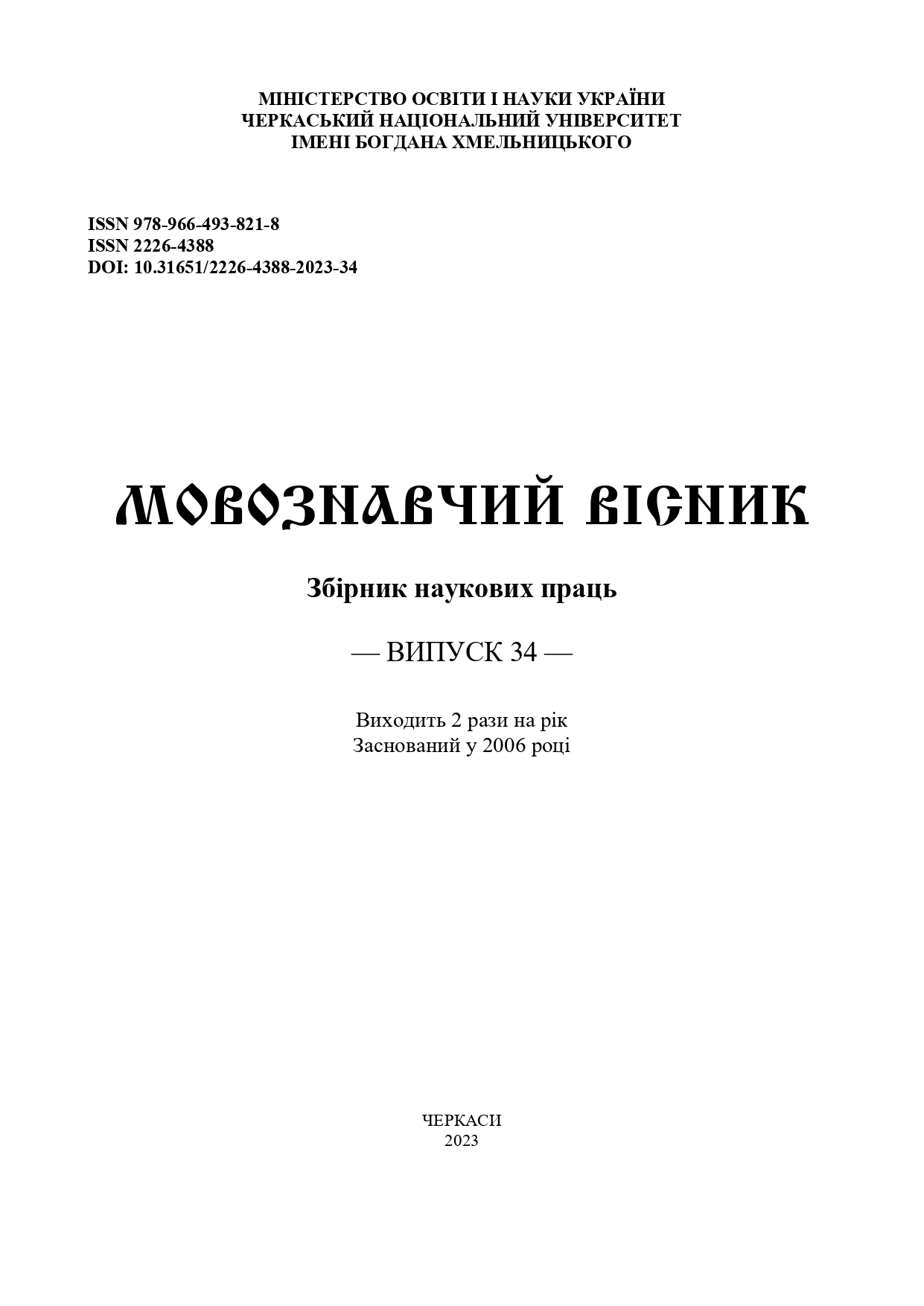RESTRUCTURING THE ORIGINAL STYLISTICS IN THE UKRAINIAN TRANSLATION OF THE COMEDY«AN IDEAL HUSBAND» BY O. WILDE
Main Article Content
Abstract
Introduction. Stylistic features of any fictional genre are to be necessarily considered in translation. The paper regards stylistic peculiarities of O.Wilde’s dramatic work, the comedy “An Ideal Husband”. Unlike the translation of fiction, the duality inherited in art of the theatre requires language to combine with spectacle, manifested through visual as well as acoustic images. Translating dramas we face a number of specific problems. When performed on stage, the words spoken constitute only one element of a
theatrical production. Here greater demands are placed on the translation with respect of its performability thus increasing the tension between the need to relate the target text to its source and the need to formulate a text in the target language. A drama text differs from any other fiction text because it is meant not for reading but for performing as it consists of a dialogue, which is connected with a proper sound and fitness.
The text is to be pronounced and performed, and this differs from ordinary conversation. The article deals with specific artistic means recreated in the translation of the comedy drama and their interpretation, through translation means and imagery.
Purpose. The article deals with a number of fragments and examples from the 19th century English literature regarded in the stylistic translation aspect analyzing stylistic repertoire of the translated drama through recreating and reflecting means of artistic imagery in O. Wilde’s comedy “An Ideal Husband”.
Methods. The article applies the contrastive methods to establish the differences in form and contents of the two-language comparative analysis, as well as descriptive passages, to fuller explain and provide the illustrative items.
Results. Though pragmatic background seems to be rather inconspicuous in terms of general stylistic effect of translating literary texts, its structural role is quite meaningful and brings new or altered senses into the narration. The paper proved stylistic aspect to be one of the most important forunderstanding and estimating the imagery of both texts under consideration.
Originality. The transformation processes are regarded in a new perspective, that of a new approach to the problems of equivalence and adequate translation in the literary context, being supported with modern views on lingual and cognitive phenomena in the evolving communicative activity throughout the global functional and translating practices.
Conclusion. Functional and stylistic equivalence is obviously perceived to be achieved through numerous translation devices including stylistic means associated with several types of changes, most of which lie within the inner and contextual meaning of the lexical units and cultural phenomena in imagery of the text.
Article Details
References
Donik, О. М. (2018). Funkciino-stylistychne navantazhennia porivnialnyh konstruktsii u tvorah Nadiiky
Herbish [Functional and stylistic emphasis in the comparative constructions in the works by Nadiika Herbysh]. In:
Science and Education a New Dimension. Philology. VI (43), 19–22 (in Ukr.).
Yefimov, L. P. & Yasinecka, O. A. (2004). Stylistyka anhliiskoi movy i dyskursyvnyi analiz: uchbovometodychnyi posibnyk [Stylistics of the English language and discourse analysis]. Vinnycia: NOVA KNYHA, 240 (in Eng.).
Kolomiiets, L. V. (2011). Perekladoznavchi seminary: aktualni teoretychni koncepcii ta modeli analizu
poetychnoho perekladu [Seminars on translation studies: current theoretical concepts and models of poetic translation
analysis]: navchalnyi posibnyk. Kyiv: Vydavnycho-polihrafichnyi centr «Kyivskyi universytet», 527 (in Ukr.).
Koptilov, V. V. (2003). Teoria i praktyka perekladu [Theory and practice of translation]: navchalnyi posibnyk.
Kyiv: Yunivers, 280 (in Ukr.).
Maksimov, S. Ye. (2006). Practychnyi kurs perekladu (anhliiska ta ukrainska movy) [Practical course of
translation (English and Ukrainian)]. Kyiv: Lenvit, 175 (in Ukr.).
Nekriach, T. Ye. & Chala, Yu. P. (2008). Cherez terny do zirok: trudnoshchi perekladu hudozhnih tvoriv
[Through Thorns to the Stars: Difficulties in Translating Fiction]: navchalnyi posibnyk. Vinnycia: NOVA KNYHA,
(in Ukr.).
Selivanova, О. О. (2010). Linhvistychna encyklopediya [Linguistic encyclopedia]. Poltava: Dovkillia-K, 844
(in Ukr.).
Selivanova, О. О. (2017). Suchasna linhvistyka: napriamy ta problemy [Modern linguistics: directions and
problems]: pidruchnyk. Cherkasy: Vyd-vo Chabanenko Yu. A, 890 (in Ukr.).
Anderman, G. (2005). Europe on Stage: Translation and Theatre. London: Oberon Books, 216 (in Eng.).

